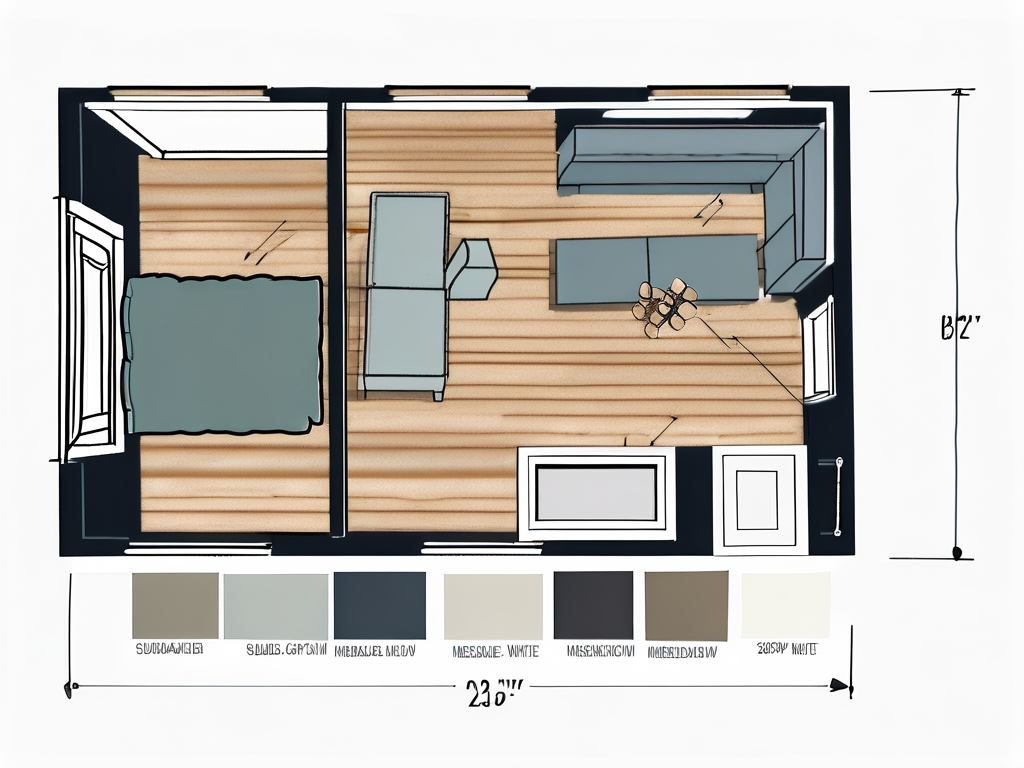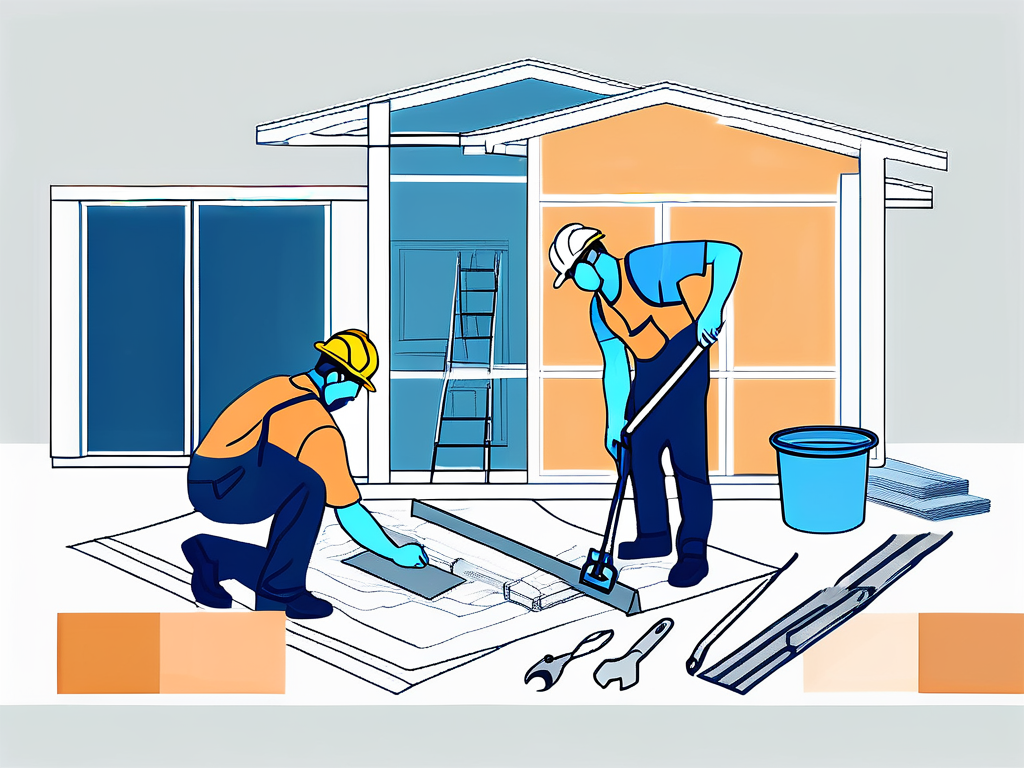How to prepare for a home remodeling project
Embarking on a home remodeling project can be both exciting and daunting. Whether you’re looking to revamp your kitchen, add additional space, or simply update the aesthetics of your home, proper preparation is key to ensuring a successful outcome. By understanding home remodeling basics, planning effectively, hiring the right professionals, and preparing your home, you can navigate the process smoothly and achieve the results you desire.
Understanding Home Remodeling Basics
Before diving into the planning stage, it’s important to have a clear understanding of what a home remodeling project entails. Familiarize yourself with the various aspects such as design, construction, permits, and costs. By educating yourself on these key factors, you lay a solid foundation for the rest of your project.
Embarking on a home remodeling journey is an exciting yet complex endeavor. It involves a myriad of decisions and considerations that will ultimately shape the transformation of your living space. From choosing the right color palette to selecting durable materials, every detail plays a crucial role in achieving your desired outcome.
Defining Your Remodeling Goals
Begin by clearly defining your remodeling goals. What do you hope to achieve with this project? Are you looking to create a more functional space, improve energy efficiency, or enhance the overall feel of your home? Take some time to jot down your priorities, as this will guide your decision-making process later on.
Your remodeling goals serve as the roadmap for the entire project. They provide a sense of direction and purpose, ensuring that every design choice and construction decision aligns with your vision for the space. Whether it’s revamping a dated kitchen or adding a cozy extension, clarity in your goals will streamline the decision-making process.
Setting a Realistic Budget
Next, set a realistic budget for your remodel. Consider factors such as cost of materials, labor, permits, and unexpected expenses. It’s wise to set aside a contingency fund in case any surprises arise during the process. Being transparent about your budget from the start will also help when communicating with contractors and vendors.
A well-defined budget not only keeps your finances in check but also serves as a tool for prioritizing your remodeling needs. It allows you to allocate resources efficiently, ensuring that essential elements are not compromised due to overspending in other areas. By striking a balance between quality and cost-effectiveness, you can achieve a successful remodel within your financial means.
Deciding on the Scope of Remodeling
Once you have your goals and budget in place, determine the scope of your remodeling project. Will you be focusing on a specific area of your home, or are you planning a whole-house renovation? Understanding the scope will help you create a timeline and identify the necessary resources for the project.
The scope of your remodeling project sets the boundaries for what can be realistically accomplished within a given timeframe. Whether you opt for a phased approach to tackle different areas of your home or prefer a comprehensive overhaul, clarity on the project scope ensures that your vision is executed seamlessly. It also aids in resource management, allowing you to allocate time and budget efficiently across various aspects of the remodel.
Planning Your Home Remodeling Project
With the basics covered, it’s time to dive into the planning phase of your home remodeling project. This is where the fun begins, as you start envisioning your dream space and making decisions that align with your goals. Planning a home remodeling project involves careful consideration of various aspects to ensure a successful outcome that meets your needs and desires.

Before embarking on your home remodeling journey, it’s essential to conduct a thorough assessment of your current space. Identify what works well and what needs improvement. This evaluation will serve as the foundation for your remodeling plans, helping you pinpoint areas that require attention and areas that can be enhanced.
Choosing the Right Design and Layout
Start by visualizing your ideal design and layout for the space. Consider factors such as functionality, aesthetics, and the overall feel you want to create. Look for inspiration from magazines, online resources, or working with a professional designer. Remember, this is your opportunity to bring your vision to life. Collaborating with a designer can provide valuable insights and innovative ideas that you may not have considered, elevating the design of your space to new heights.
When selecting a design and layout, think about how you use the space on a daily basis. Whether it’s a kitchen renovation aimed at improving workflow or a bathroom remodel focused on creating a spa-like retreat, the design should enhance the functionality and enjoyment of the space.
Selecting Materials and Finishes
The materials and finishes you choose can have a significant impact on the overall look and feel of your remodeled space. Research different options, compare prices, and consider the durability and maintenance required for each material. Consult with professionals to ensure you make informed decisions that align with your goals and budget. Investing in high-quality materials can enhance the longevity and aesthetic appeal of your home, providing value for years to come.
When choosing materials, consider factors such as sustainability, eco-friendliness, and energy efficiency. Opting for environmentally conscious materials not only benefits the planet but also contributes to a healthier indoor environment for you and your family.
Creating a Timeline for Your Project
Once you have an idea of the design and materials, it’s important to create a realistic timeline for your project. Consider any holidays, special events, or personal commitments that may impact the timeline. Discuss the timeline with your contractor to ensure it aligns with their availability and allows for any necessary permits or inspections. A well-planned timeline helps keep the project on track and minimizes delays, ensuring a smooth and efficient remodeling process.
Communication is key during the planning phase, so be sure to maintain open and clear lines of communication with all parties involved in the project. Regular updates, meetings, and discussions can help address any concerns or changes promptly, fostering a collaborative and productive working relationship.
Hiring Professionals for Your Remodeling Project
While it may be tempting to tackle a home remodeling project on your own, hiring professionals is often the key to ensuring a successful outcome. Experienced contractors and designers bring knowledge, expertise, and efficiency to the table, saving you time and potentially costly mistakes.

When it comes to finding a reliable contractor, taking the time to research is of utmost importance. You want to find someone who specializes in the type of project you are undertaking, whether it’s a kitchen renovation, bathroom remodel, or a complete home overhaul. Don’t hesitate to ask for recommendations from friends, family, or even utilize online review platforms. These resources can provide valuable insights into the contractor’s workmanship and professionalism.
Once you have a list of potential contractors, it’s crucial to conduct interviews and request references. Speaking with previous clients can give you a sense of the contractor’s reliability, communication skills, and ability to meet deadlines. Additionally, ask for proof of licenses and insurance to ensure that you are working with a legitimate professional.
Understanding Contractor Agreements
Before hiring a contractor, it’s essential to have a written agreement in place. This agreement should outline all project details, costs, timelines, and any other pertinent information. Take the time to review the contract carefully, paying attention to every detail. If there are any concerns or questions, don’t hesitate to address them with your contractor. This open dialogue will help avoid any misunderstandings or disputes down the line.
Remember, a well-drafted contract protects both parties involved. It sets clear expectations and ensures that everyone is on the same page. If any changes or modifications to the project arise during the remodeling process, make sure to document them in writing and have both parties sign off on the amendments.
Communicating Effectively with Your Contractor
Open and clear communication with your contractor is crucial throughout the remodeling process. Regularly communicate your expectations, addressing any concerns promptly. Being responsive to any requests or questions from the contractor helps maintain a positive working relationship.
Consider establishing a communication plan with your contractor, outlining preferred methods of contact and the frequency of updates. This will help streamline the flow of information and ensure that everyone is on the same page. Remember, effective communication is a two-way street, so be open to listening to your contractor’s suggestions and expertise.
By hiring professionals for your remodeling project, you are not only investing in the expertise and efficiency they bring to the table, but also in the peace of mind that comes with knowing your project is in capable hands. So, take the time to find a reliable contractor, understand the agreement, and maintain open communication throughout the process. Your dream home is just a few steps away!
Preparing Your Home for the Remodel
As the remodeling project draws closer, it’s important to prepare your home to minimize disruptions and streamline the construction process. Taking proactive steps to secure valuables, make living arrangements, and address safety concerns will make the remodeling experience more manageable.

Securing Valuables and Fragile Items
Prior to the start of construction, secure any valuables or fragile items that may be impacted during the remodeling process. Remove artwork from walls, pack away delicate items, and store them in a safe location to prevent damage or loss.
Making Living Arrangements During the Remodel
Depending on the scope of your remodeling project, you may need to make alternative living arrangements while the work is being done. Consider staying with family or friends, renting a temporary space, or allocating a designated area of your home as a makeshift living space. Ensuring a comfortable living situation will make the construction phase more tolerable.
Addressing Potential Safety Concerns
Lastly, it’s important to address any potential safety concerns that may arise during the remodel. Ensure all construction areas are properly secured, clearly marked, and inaccessible to children or pets. Communicate any safety guidelines or restrictions to the contractors to maintain a safe working environment.
By thoroughly preparing for your home remodeling project, you set yourself up for success and minimize potential issues along the way. Remember to understand home remodeling basics: plan effectively, hire professionals, and prepare your home accordingly. With careful preparation, your dream space will soon become a reality!



